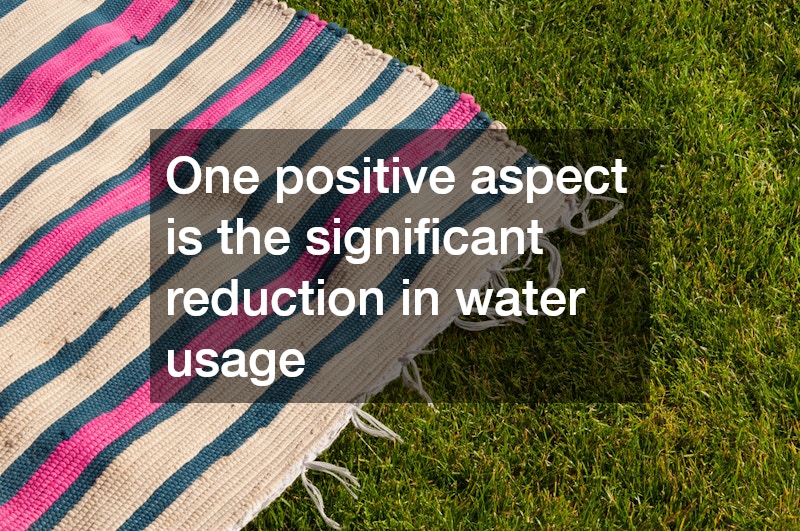With the growing demand for low-maintenance and aesthetically pleasing outdoor spaces, synthetic grass has rapidly gained popularity. Originally limited to sports fields and commercial landscapes, homeowners are now embracing this grass alternative for residential lawns. The central question remains: is synthetic grass the right choice for your lawn? To ensure a successful installation, many homeowners turn to professional synthetic grass installers. This article seeks to explore this question by delving into the benefits and drawbacks, comparing upfront and long-term costs, and evaluating the environmental implications associated with synthetic grass installation.
What Are the Benefits and Drawbacks of Synthetic Grass?
Synthetic grass offers a range of benefits that contribute to its rising popularity. One of the primary advantages is its low-maintenance nature. Homeowners can save significant time and resources otherwise spent on watering, mowing, fertilizing, and pest control—common upkeep tasks for natural grass lawns. Additionally, synthetic grass provides a lush and green appearance year-round, regardless of weather conditions, making it an attractive option for areas that experience droughts or have water restrictions. Many homeowners rely on professional synthetic grass installers to ensure a flawless and durable installation.
Despite its benefits, synthetic grass has several potential drawbacks that homeowners should consider. One concern is the initial installation cost, which can be significantly higher than natural grass. Additionally, synthetic grass surfaces can become hot, particularly in direct sunlight, potentially causing discomfort or burns if walked upon with bare feet or if pets spend extended periods on it. While synthetic grass does not require mowing, it may need periodic brushing to keep the grass blades upright and to remove debris.
It’s essential to weigh both the benefits and drawbacks when considering synthetic grass as a suitable lawn alternative. An often-overlooked disadvantage is the lifespan of synthetic grass, which is typically between 10 to 15 years. Over time, the color may fade, and sections may show wear and tear, necessitating replacement. Additionally, while synthetic grass reduces reliance on lawn care products, it lacks the natural cooling properties and ecological benefits provided by natural grass, such as carbon dioxide absorption and habitat support for local wildlife.
How Does the Cost of Synthetic Grass Compare to Natural Grass?
The initial cost of installing synthetic grass can be considerably higher than planting natural grass. This initial investment covers not only the materials, which include the grass itself and infill materials, but also labor costs and site preparation, which involve removing existing grass, leveling the ground, and installing drainage systems if needed. Many homeowners choose professional synthetic grass installers to ensure the job is done correctly and lasts for years. On average, the installation cost of synthetic grass ranges from $5 to $20 per square foot, depending on the quality and complexity of the project.
In contrast, the cost of installing natural grass is often lower, mainly involving the price of sod or seeds, soil preparation, and initial watering. However, the ongoing maintenance expenses of natural grass should be considered. Homeowners must account for regular mowing, watering, fertilizing, and pest control, which can quickly accumulate over time. In regions with water scarcity, natural grass can be more expensive due to high water bills.
Over the lifespan of the lawn, synthetic grass can offer significant savings in maintenance costs. With minimal upkeep needed, homeowners can save on water bills, lawn care services, and chemical products. According to a widely cited fact in the industry, switching to synthetic grass can save approximately 55 gallons of water per square foot annually. Ultimately, the decision between synthetic and natural grass should consider both short-term budget constraints and long-term financial implications, including potential maintenance savings.
What is the Environmental Impact of Synthetic Grass?
Examining the environmental impact of synthetic grass requires consideration of several factors. One positive aspect is the significant reduction in water usage. Switching to synthetic grass reduces the demand for water, an essential benefit in drought-prone regions. This reduction results in lower water consumption and, consequently, smaller water bills, alleviating stress on local water supplies. Many homeowners rely on professional synthetic grass installers to ensure the lawn is installed efficiently, maximizing these environmental benefits.
However, synthetic grass production and disposal raise environmental concerns. Manufacturing synthetic grass requires fossil fuels and results in carbon emissions, contributing to environmental pollution. Unlike natural grass, synthetic grass does not decompose, leading to landfill waste at the end of its lifecycle unless it is recycled—a process not yet widely adopted. The infill materials, often made from recycled tires, risk leaching harmful chemicals into the soil or nearby waterways over time. Choosing experienced synthetic grass installers can help select materials and installation methods that minimize ecological impact.
Synthetic grass lacks the air purification and carbon sequestration abilities of natural grass. Natural grass acts as a carbon sink, absorbing carbon dioxide and providing oxygen. This loss of ecological benefit, along with the potential loss of natural habitats for insects and small wildlife, must be considered when evaluating its environmental impact. For eco-conscious homeowners, understanding these factors is crucial when determining if synthetic grass aligns with their environmental values.
Deciding whether synthetic grass is right for your lawn involves assessing various factors specific to your needs and circumstances. The benefits of synthetic grass, such as low maintenance and water conservation, are evident, but they should be carefully weighed against drawbacks like the upfront costs and environmental impacts. While synthetic grass offers a solution to constant lawn care woes and water scarcity, its ecological implications and the long-term financial commitment require consideration. Consulting experienced synthetic grass installers can help homeowners understand installation requirements, material choices, and maintenance expectations. Homeowners are encouraged to evaluate their priorities, budget, and regional environmental concerns to determine if synthetic grass is a suitable and sustainable choice for their lawn.

